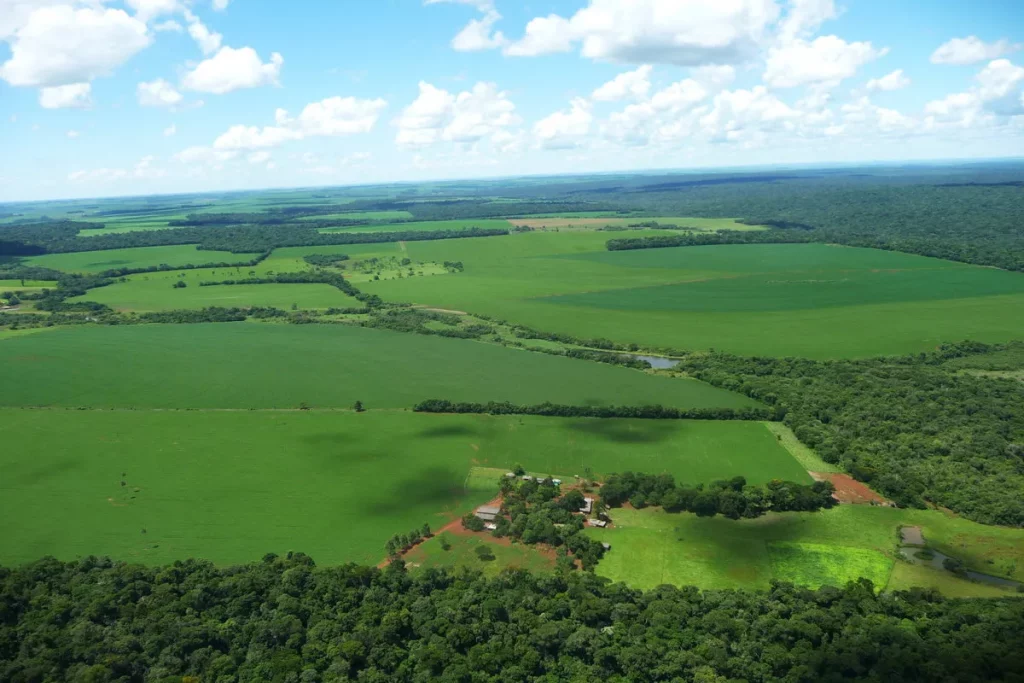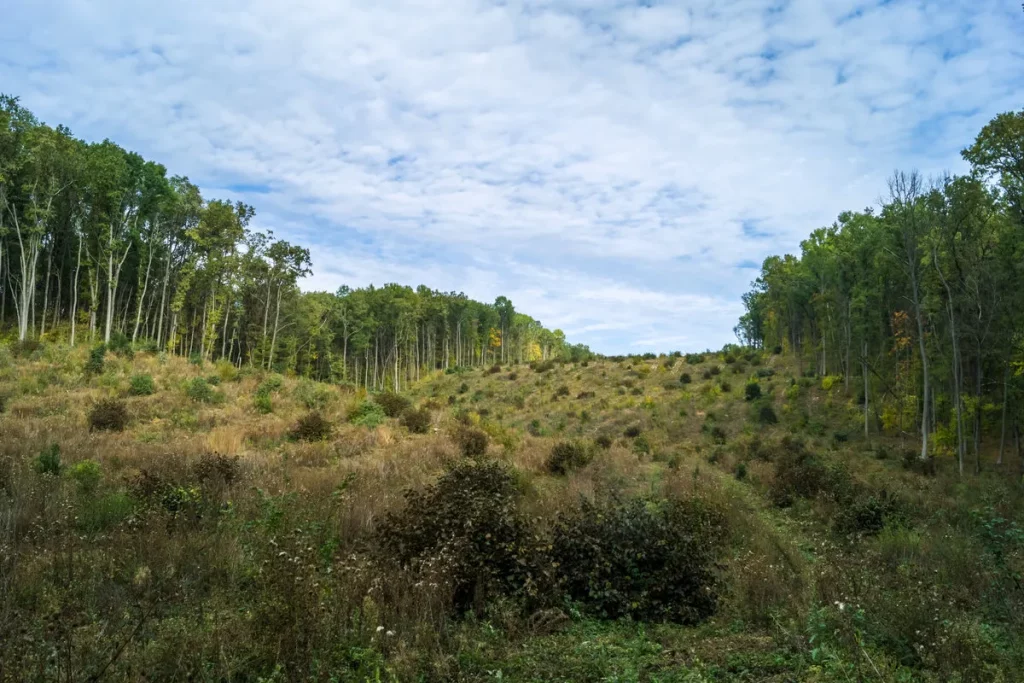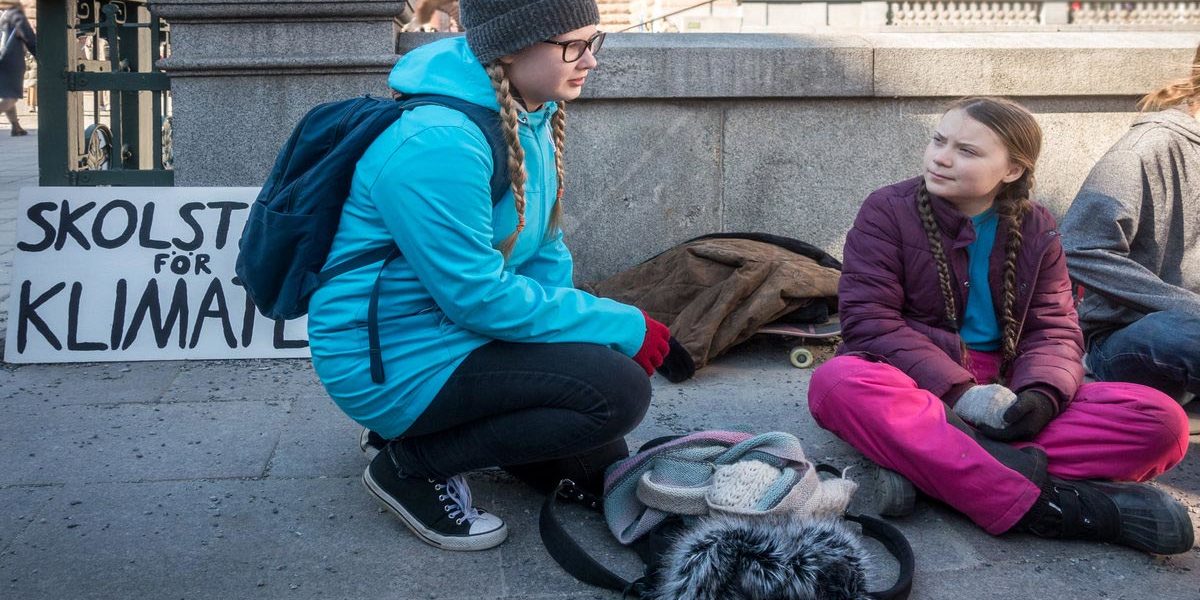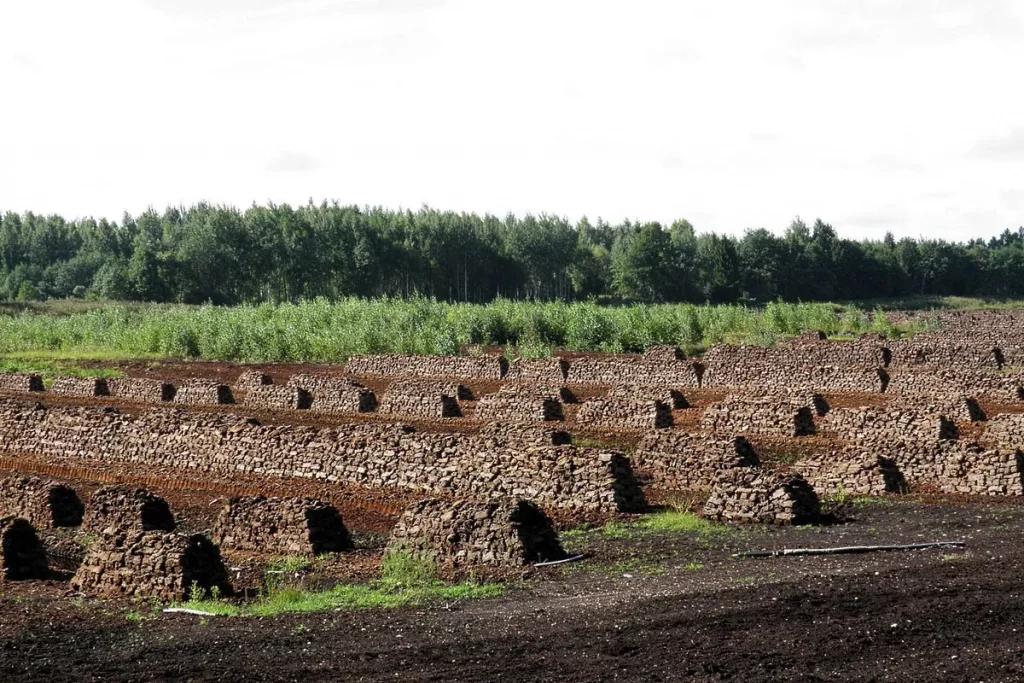Part 1: Why “climate change”?
Forest fires in 2018 in Sweden were not a coincidence: that summer was the country’s hottest summer on record. Something had to be done about this. Greta Thunberg, then a 15 years old pupil, did what many governments failed to do. In August 2018, Greta began sitting at Sweden’s Parliament House every Friday, holding a sign “School Strike for Climate”. Her persistence did not go in vain but created what later was called “Greta Thunberg’s Effect” as in December 2018, more than 20.000 pupils and students from 270 cities all over the world, inspired by Greta, joined School Strike for Climate. In 2019, climate strikes became even more widespread, attracting people concerned about climate change. The issue of climate change and excessive emissions of greenhouse gases causing “overheating” of the planet became extremely important in the media space of the world.
It would be a mistake to think that before Greta Thunberg’s strike, climate change was out of the attention of countries’ leadership. The Paris Agreement adopted by 186 countries, including Ukraine, aims to “limit the global temperature increase in this century to 2 degrees Celsius above preindustrial levels”. Each participating country was supposed to take decisive steps to achieve this and other goals of the Agreement. However, Greta Thunberg’s protest was not without reason: it now appears that governments have not been very active in implementing measures to prevent climate change. What a big mistake…
Climate models clearly show that climate will become a severe challenge for humankind in several decades. According to the Intergovernmental Panel on Climate Change (IPCC) report, global warming will lead to a higher frequency of droughts, floods, dust storms, wildfires, rises in numbers of insect pests, and an increase in food prices. It also causes a decline in incomes, let alone numerous natural disasters that will be direct causes of people’s deaths. Usually, scientists and climate activists suggest the following steps to reduce greenhouse gas emissions:
- Rejecting fossil fuels (oil products, coal, peat etc.) as they emit a considerable amount of greenhouse gases while burning;
- Switching to renewable sources of energy (such as winter, water, the sun and so on);
- Ensuring maximal energy efficiency, in other words, reducing energy use;
- Reducing factory farming, since commercial livestock breeding also causes considerable emissions of greenhouse gases;
- Developing green transport infrastructure etc.
Indeed, all the steps mentioned above and dozens not listed here are crucial for preventing climate change. However, there are other directions of work too.
Part 2: Nature lends a helping hand
What are nature-based solutions to climate change? In simple terms, these are provided by nature «services» for the prevention of climate change and adaptation to it. Here is an example: trees absorb carbon dioxide (one of the main components of greenhouse gases); thus, forests reduce the amount of carbon dioxide in the atmosphere preventing further “overheating” of the planet.
Unfortunately, natural climate solutions do not get due attention globally. According to statistics, only 2.5% of money spent on resolving climate issues is spent on natural climate solutions. It is conceivable that their total contribution to climate change prevention is little too and proportional to this 2.5%.
However, numerous scientific studies prove the opposite. Presently plants and soils of terrestrial ecosystems absorb nearly 20% of all greenhouse gases emitted due to human activities. This function of ecosystems is called carbon sequestration, as plants capture and store carbon, which otherwise would be emitted into the atmosphere in the form of carbon dioxide. Even better, carbon is also “conserved” by soils, partially formed by dead plant parts.
However, agriculture and forestry considerably reduce the ability of ecosystems to sequestrate carbon, thereby making for climate changes. People can contribute to carbon absorption by ecosystems and prevent the planet from warming up.
Scientific researches show that under the condition of efficient natural resource use, the contribution of natural climate solutions to the fight against climate change can be extremely high — more specifically, it may result in the absorption of up to 37% of greenhouse gases by 2030. But greenhouse gas absorption refers to the prevention of climate change. While there is another way to respond to global warming, that is an adaptation to climate change.
Floods, fires, droughts, reduced crop yields, and rivers drying up are only some of the negative consequences of climate change. Only united efforts of all countries in the world will allow reducing the impact of these phenomena at least partially. Perhaps, such a result would become the most outstanding achievement of humankind in all its history. We should be realistic — climate change will be affecting us in one way or another. Natural ecosystems can serve as sort of “safety bags” that will allow humankind to adapt to climate change.
Another example: natural forests increase air humidity and cool the atmosphere, partially preventing droughts, and rivers in their natural beds can significantly reduce the harmful effect of floods.

Agricultural fields instead of rainforest in Brasil (Photo by Leonard G.)
Generally, such free-of-charge “services” nature provides to humans (cleaning the air, protecting against droughts, etc.) are called “ecosystem services”. We never pay for them, but we would hardly be able to live without them. For instance, Holosiivskyi National Nature Park provides citizens of Kyiv with free services of air cleaning. However, treatment and prevention of respiratory diseases that would become more frequent in case of deforestation of the National Park would cost Kyiv citizens approximately $16 mln. On average, ecosystems least affected by humans provide the most significant volume of services. That’s why the protection and rehabilitation of natural ecosystems negatively affected by human activities can contribute to the prevention of climate change and greatly help humankind adapt to such change.
Although it is not only humankind that has to adapt but ecosystems themselves. By definition, any system consists of specific components. In natural ecosystems, those components are living organisms, which belong to wildlife, and certain elements of inanimate nature that serve as species habitats. For instance, a forest ecosystem consists of trees, herbaceous plants, animals, soils, etc. The fewer components a system consists of, the less sustainable the system is.
Let us compare two hypothetic woodlands. One has been preserved in its natural condition and is a habit for thousands of species. While another one has degraded as a result of deforestation and other human interferences and is no longer able to provide conditions needed for the existence of a large number of species. Recent studies show that a degraded forest is more vulnerable to climate change consequences, such as fires, droughts, etc., which means it will not be able to provide humans with a full range of ecosystem services.
A conclusion that can be made from the above-mentioned is simple: we should sustain ecosystems in their most natural condition. Humankind’s welfare and basic survival depend on that.
Part 3: What can be done in Ukraine?
And what about Ukraine?
While natural climate solutions are more or less supported in Western countries, in Ukraine, the situation is much worse. We still have many forests, marshlands, rivers, and other natural ecosystems relatively undisturbed compared with many highly developed countries. Unfortunately, in Ukraine, even the “traditional” sphere of environmental protection responsible for preserving and rehabilitating natural ecosystems has many problems dealing with climate issues.
Therefore, it is essential to realize that environmental protection is about preserving animals and plants, slowing down climate changes, and adopting such changes. In simple words, it is a mainstay of the welfare of Ukrainians. For instance:
1) Protection of self-sown forests. Forests cover about 16% of the territory of Ukraine, and nearly 1% of this area are forest belts. Formerly, the forest area used to be larger, but it was reduced due to deforestation and deforested areas for farming purposes. After the collapse of the Soviet Union, an agricultural crisis occurred in Ukraine, and as a consequence of the situation, part of farming lands ceased to be cultivated. With time, over abandoned fields bordering woods, first trees began to grow, primarily pines and birches. There is no official statistical information on this matter, but it is estimated as hundreds of thousands of hectares of such self-sown forests. Why is it essential to preserve them?
Young growing trees absorb carbon dioxide much more efficiently than mature ones. Considerable areas of self-sown forests are a potent tool for preventing climate change, let alone their function as being homes for various species.
Moreover, the fact that such forests grow naturally means they are more tolerant to drought, which makes suffer numerous artificial pine trees of Polissia, a natural and historical region of Ukraine.
Nonetheless, the official status of most self-sown forests in Ukraine is “lands of the agricultural designation”. At any moment, self-sown forests can be turned into farming land again, causing damage to Nature. That’s why national monitoring of such forests and establishing protected status for the most valuable areas is essential.
2) Sustainable forest management. If we think about the carbon cycle in forests a little, we can conclude that forests are “carbon-neutral”, since the amount of carbon they accumulate is equal to the amount of carbon they emit into the atmosphere through decomposition processes or wildfires. However, research data show that is not entirely true. Even old forests capture more carbon (less than young ones) than they emit back into the atmosphere. Though old trees shed dead twigs, branches, and pieces of their bark, these tree parts compose forest litter and soil. Accordingly, they not only let forests capture carbon from the atmosphere, but they also serve as a depot by storing carbon in trees and soils. It is easy to figure out that forest management that implies partial deforestation reduces forest carbon stock. When trees are removed and used for heating purposes and burnt, they release carbon dioxide into the atmosphere.
What is then the proper forest resources management? Large carbon stocks in one or another forest do not necessarily mean that the forest is inhabited by more species or more significant populations of different species. Thus, a dilemma can emerge: whether forest resource management should aim to maximize forest carbon stocks at the expense of species inhabiting the forest, or on the contrary? In the first case, carbon dioxide emissions reduction, and in the second one — forests are more tolerant to climate change.
The question is not an easy one. In Ukraine, requirements for protecting rare species and forests are ignored in 90% of cases, despite being established in legislation.
Management of forests as carbon depots sounds like science fiction in Ukraine — national policy in this field does not exist. Therefore, it is necessary to implement principles of climate change planning into forest legislation. At the same time, the dilemma of “species or carbon” should be resolved using examples of concrete forests and with a solid scientific basis. And it is equally important to implement accurate measures to protect forests with rare environments and species that will guarantee their tolerance to future climate changes.

Total forest cut in “Chornoliski” reserve, Kropyvnytsky region of Ukraine (Photo by PHOTOROMIO, CC BY-SA 4.0)
3) Intensive forestry. At first glance, intensive forestry does not associate with forest protection. Nevertheless, many West World countries already use this approach and have some advantages. Unlike extensive forestry (presently prevailing in Ukraine), intensive forestry implies creating particular forest plantations on an insignificant part of forest lands (usually less than 10% of the total area). The purpose of these plantations is to grow trees specially selected for specific conditions of their environment; the trees on plantations are intensively managed. Such plantations produce considerably larger amounts of high-quality timber, which allows for fewer interferences in the rest of the forests without financial losses. The impact of intensive forestry on forest protection remains a controversial issue, however, it is still worthwhile to consider an option of the pilot implementation of this approach in Ukraine — at the very least, to assess its apparent advantages and soft spots.
4) Reduction of volumes of firewood used in domestic heating. As mentioned above, burning firewood for heating results in multiply greenhouse gas emissions. In Ukraine, this is a very pressing issue as there are quite a few settlements in the country where houses are heated exclusively with firewood, while renewable sources of energy are used relatively rarely. At the same time, the false idea of heating homes with firewood as something extremely environmentally friendly is prevalent here. But, apart from causing harm through greenhouse gas emissions, burning firewood for heating purposes also affects forest sustainability. In Ukraine, much firewood is produced through sanitation cutting (aka sanitation harvest). By its nature, sanitation cutting is supposed to help fight forest pest insects, however, in Ukraine, efficient sanitation harvests are rarely conducted. There are two reasons for this: a lack of foresters’ knowledge about effective ways to perform sanitation cutting and high demand for timber and firewood. Thus, sanitation harvest frequently leaves forests less sustainable (just as any interference of the kind). Solutions to this problem are inseparably associated with switching to renewable energy sources.
5) Peatlands protection and restoration. Most bogs in Ukraine are peat bogs, meaning they contain specific amounts of undecomposed organic matter — peat, which is used as heating fuel and fertilizer. In some areas of Ukraine, particularly in Polissia, peat bog areas reach up to 10% of the region’s total area. During the Soviet Union, a significant part of peatlands was land improved or drained, although there is no official statistical information on the matter. In 2016, only 560 tons of peat were mined by the state, most of which was turned into fuel briquettes. There is a tendency to increase peat extraction because of other sources of the energy price increase. In 2019, in Volynska Oblast alone, authorities issued permits for peat extraction on about 6000 hectares, including nature conservation areas. Why is this alarming?
Peatlands store nearly 42% of the carbon contained in the soils of Earth. Disturbed peatlands result in large-scale greenhouse gas emissions — about 10% of all emissions caused by land use. It is easy to conclude that climate change prevention requires reducing peat extraction and restoration of disturbed peatlands. The latter is very important because naturally drained peatlands are dryer than undisturbed ones and often burn throughout summer, emitting vast amounts of carbon dioxide. Restoration of drained peat bogs reduces the risk of such fires, so relevant national programs need to be adopted.
6) Steppes and grasslands protection. The area of Ukraine is more than 60 billion hectares. More than half of this area (35 billion hectares) is occupied by fields. Once, the South of our country was all covered by endless steppes. Unfortunately, now Ukrainian steppes are the most endangered ecosystems in the country as their total area is no more than 3% of what it used to be. The remains of our steppes disappear due to plowing, often conducted illegally. How does it affect climate change?
Soils in grassland and steppe ecosystems can store carbon as well. Plowing causes significant carbon emissions into the atmosphere. Besides this, natural steppes and grasslands feature fertile soils, also homes for insects and animals that hunt crop pests. Thereby it is necessary to protect the last natural grasslands and steppes of Ukraine but also to restore degraded ones by reducing the area of agricultural lands.
As we can see, everything in the world is interdependent. In Ukraine, environment protection, wildlife protection, and struggling against climate change are traditionally separate work directions. The state, represented by relevant departments and government bodies, is far from being active in this matter and taking urgent measures. However, solving global issues requires reconsideration of established approaches. Only through uniting our efforts is it possible to respond the problem of climate change. But it is worthwhile to keep in mind opportunities provided to us by nature itself!
Yegor Hrynyk, forestry expert.








